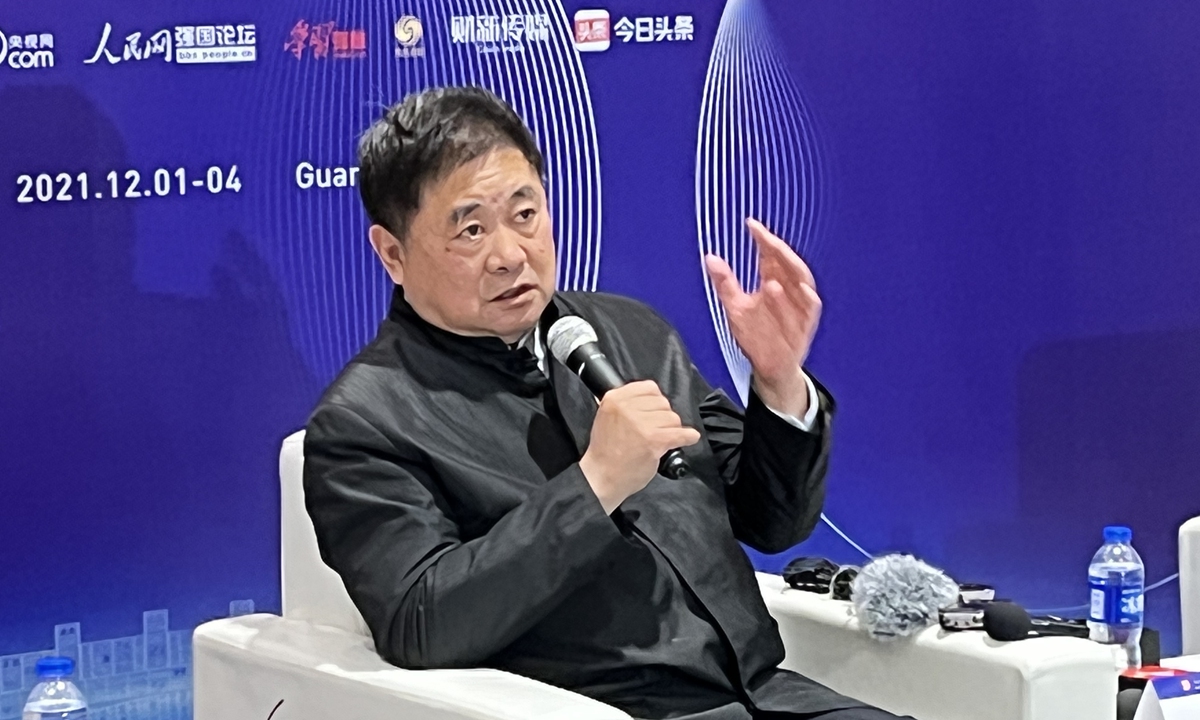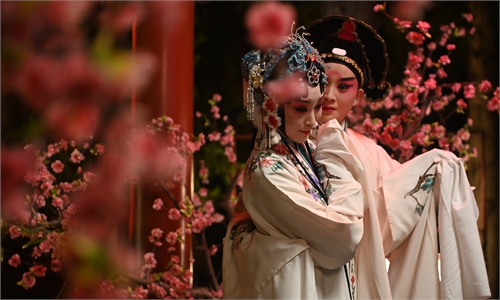China to take more active role in protecting Afghan relics
Palace Museum in Beijing publishes proposal, calling for international attention and support

Shan Jixiang, former director of the Palace Museum -- also known as the Forbidden City -- in Beijing, takes questions from reporters at the 2021 Understanding China Conference (Guangzhou) on December 2, 2021. Photo: Cao Siqi/GT
As the situation in Afghanistan has undergone major changes, the country's cultural heritage has once again become a focus of heritage experts across the world, with many expressing concern about how the Taliban militants will treat Afghanistan's ancient heritage because of what they did the last time they controlled the country.
At the ongoing 2021 Understanding China Conference in Guangzhou, South China's Guangdong Province, Shan Jixiang, 67, former director of the Palace Museum - also known as the Forbidden City - in Beijing, told the Global Times on Thursday that China is taking a more active part in the protection of international cultural heritage and is willing to play a more important role in protecting cultural relics from Afghanistan, a country with unique treasures that have been long threatened by political turmoil.
As home to two UNESCO World Cultural Heritage Sites (The Cultural Landscape and Archaeological Remains of the Bamiyan Valley and the Minaret of Jam), Afghanistan used to be a pearl of Asian culture. For over two millennia, these two sites have witnessed the development of Afghan civilization and sustained economic and cultural exchanges along the Silk Road.
In recent years, China has signed several framework agreements on cultural heritage protection cooperation with many ancient civilizations, including the one with Afghanistan, which impressed Shan most.
Although China and Afghanistan signed the agreement in 2006, Shan only got the chance to set foot in the country 10 years later.
"The Afghan museum told us that amid war and political chaos, it still tried to protect hundreds of precious cultural relics, in the hope that these would tour China for exhibition and preservation," Shan recalled.
"The Afghan ambassador to China came to me and wished that the Palace Museum could help preserve the country's relics for a longer time. I agreed and planned a large-scale exhibition themed 'Rebirth from Fire', with diplomats from various countries being invited to conduct academic research on the priceless treasures," Shan said.
The Treasures From the National Museum, Kabul exhibition featuring 200 precious items from the Bactrian Hoard, arrived in China in March 2017, and toured nine venues in eight cities including the Palace Museum, the Dunhuang Academy and the Hong Kong Museum of History, attracting more than 1 million spectators.
After viewing the precious items, many said that when the ancient Afghan civilization met the Chinese people on the journey of realizing the "Chinese Dream" in the new era, it struck an emotional resonance like "heroes cherishing each other."
Even years later, when the Taliban militants came to power, Chinese audiences showed special concern and attention to these cultural exhibits, hoping that they could be well cared for.
Just a week ago, the Palace Museum in Beijing published a proposal signed by 21 reputed academics from China and abroad, calling for international attention and support for the present situation of Afghan cultural heritage and local cultural experts.
The proposal was initiated by Wang Xudong, the director of the Palace Museum, urging support for improving the work conditions, education and training rights, and other basic interests of the staff at Afghanistan museums and heritage sites.
Although Taliban officials promised in August to protect the National Museum of Afghanistan in Kabul, and its valuable collections of cultural artifacts, cultural preservation experts continued to worry whether the museum, which is considered one of the world's greatest repositories of ancient cultures, would suffer again as it did in the 1990s, when civil war led to the looting and destruction of most of its buildings.
Media reports said that after the Taliban were ousted in 2001, officials at the museum reported that the Taliban had confiscated or destroyed thousands of objects in its collection - largely Buddhist statues.
After a world tour in countries like China, Italy and Japan, these cultural relics returned to Kabul.
"This is the mutual support of ancient civilizations in the field of heritage," Shan said, noting that China will spare no efforts in calling for peace, the protection of cultural relics and cooperation among the world's museums.
Shan shared his insights on cultural relics' protection, saying that this heritage should not be "locked away" but be open to the public for proper use.
"Protection is not the goal, neither is utilization. The ultimate goal in the cause of cultural relics' protection is to inherit," Shan said.
According to Shan, the Palace Musuem in Hong Kong will open to the public on July 1, 2022, marking 101 years of the founding of the Communist Party of China and "at least 600 sets of relics will be displayed in Hong Kong."



